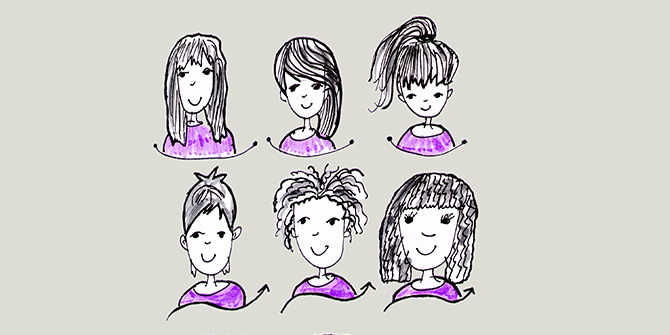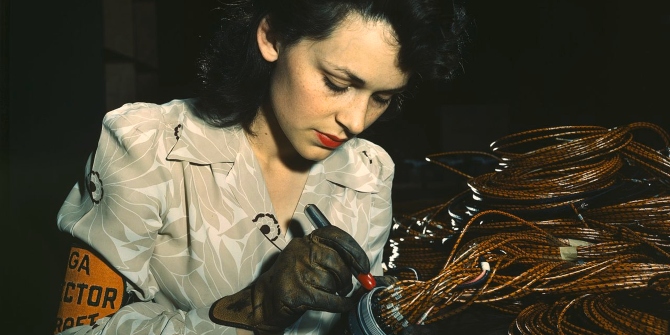When it comes to gauging their relative income, people’s subjective perceptions are rarely in line with reality. Drawing on their new book, Gerry Mitchell and Marcos González Hernando set out why these perceptions matter to understand inequality in the UK today.
Who should be considered privileged? What does it mean to be rich? A 2020 Trust for London report found there is little consensus on such matters. Still, if you want to measure inequality, the line has to be drawn somewhere.
Most quantitative research tends to divide the population into quintiles or deciles ordered along an unequally distributed variable. In most instances, this is personal or household income. One of the most important indices of inequality, the Palma Ratio, compares the share of total income of the top 10 per cent with that of the bottom 40 per cent. According to the Organisation for Economic Co-operation and Development (OECD), in the UK it was 1.47 in 2020. That means that for every pound earned by the bottom 40 per cent, £1.47 is captured by the top 10 per cent – a group that, it’s worth spelling out, is a quarter of its size.
The top 10 per cent includes both billionaires and people who would struggle to get a mortgage.
Nevertheless, as we detail in our recent book, Uncomfortably Off, the top 10 per cent is a very diverse group and bundling them together risks neglecting crucial aspects of inequality. The top 10 per cent includes both billionaires and people who would struggle to get a mortgage. According to the HMRC Survey of Personal Incomes, for the 2020/21 tax year this includes anyone who earns £59,200 and over before tax.
Common misconceptions
A pioneering study funded by the Foundation for European Progressives examined the financial position and attitudes towards inequality amongst the top 10 per cent of income earners in the UK and three other European countries. Of the 110 respondents interviewed, most people thought this figure was surprisingly low, and none of them felt rich. Many even thought they were close to median earners at the 50 per cent mark, who in fact earn less than half the amount (£26,300 in the UK, according to the same HMRC source).
In the words of sociologist Rachel Sherman, one reason is that many are “upward oriented”. They tend to compare themselves with people in their networks who earn about as much – or more than – them. Those networks tend to be structured around education and professional settings, which are increasingly segregated. This is only compounded by the taboos that exist around speaking openly about your salary – a subject too closely tied to self-worth, especially as in this group meritocratic narratives are especially common.
High earners are also aware that their incomes are dwarfed by those of the Elon Musks of the world. Indeed, those just into the top 10 per cent, or even the top 3 per cent on an income of £104,000 are still further away from the bottom of the top 1 per cent (earning £183,000 and over) than from the UK’s median income (£26,300).
This is not to say that many in the top 10 per cent are not doing relatively well. This year, their pay rises have outstripped those of the rest of the workforce driving recent inflation and soaring interest rates. However, they have done nowhere near as well as the very richest. According to the World Inequality Database, while the top 10 per cent grew its share of total income by 7.6 per cent between 1980 and 2018 (from 28.5 per cent to 36.1 per cent), the top 1 per cent grew theirs by 6.3 per cent (from 6.8 per cent to 13.1 per cent), which leaves only 1.3 per cent of share growth for the rest of the top 10 per cent. This raises the question of how much of that income was received by those at the bottom of the top decile. Meanwhile, the share of the bottom 50 per cent decreased from 22.6 per cent to 20.2 per cent.
Feeling the squeeze
The growing socio-economic distance between those well into the top 1 per cent and the rest of the top decile may explain the litany of recent articles that claim people earning six-figure salaries are finding it increasingly difficult to get by.
In addition, the dominance of assets threatens to render the meritocratic narratives of the top 10 per cent unconvincing. As famously documented by Thomas Piketty in Capital in the twenty-first century, wealth is now increasingly more important than income, and even relatively high earners can feel their work paying less and less.
Wealth is now increasingly more important than income, and even relatively high earners can feel their work paying less and less.
Meanwhile, traditionally upper-middle class professions such as law, medicine and academia are threatened by automation, precarisation and increased competition in globalised labour markets. The children of high earners will increasingly see their position depend on, as Maren Toft and Sam Friedman put it, the “bank of mum and dad”, and on what they inherit, rather than only on their professional status. The current rise in interest rates and house prices could have serious political repercussions as highly indebted homeowners, having been sold the idea of home ownership as a rite of passage, see mortgages become increasingly unaffordable.
A huge proportion of high-paying jobs are concentrated in the South East of the UK, and the average London house price was at £533,986 in January 2023; generally a mortgage is 4 to 5 times your annual salary at most. A fifth of that is £106,797 – well out of reach for those at the lower end of the decile. In August 2022, the then Chancellor, Nadhim Zahawi, even commented that people on £45,000 (that is, at the threshold of the top 20 per cent) would struggle to pay their energy bills.
Why equality makes us all better off
In our book, we argue that to understand the extent of inequality, we need to understand the relatively well-off. They are more likely than the rest to vote, to have trust in institutions, to feel optimistic about the future and to work for the institutions that rule our economy and politics. Still, increasingly only the wealthiest among them retain a sense of security and comfort. They used to be able to feel an implicit security and distance from societal upheavals. But this is not so much the case anymore.
High earners have two options. The first is to stockpile every possible advantage for themselves and their children. The second is to contribute to a common safety net that benefits everyone. While the latter looks highly unlikely in the current political climate, high earners won’t be able to isolate themselves from mounting inequality for much longer.
The UK’s top 10 per cent is a fragile group. Most people aren’t in it for the majority of their lives. While they perceive of themselves – and there is status in being seen – as largely independent from the state, it is time for the top 10 per cent to be presented with an alternative framework. Making our social services – our schools, housing and health – more efficient and equitable will help all of us through predictable and unpredictable phases of our life and in turn prevent inequality from continuing to exert such a huge drag on our productivity and well-being. Dr Tania Burchardt, echoing the words of the late John Hills, at a recent Resolution Foundation event reminded the audience that “when we are talking about redistribution, we are largely talking about redistribution from ourselves to ourselves at a different point in our lives and not from ‘us’ to ‘them’.” Higher earners should know that greater equality is really in their interest as well.
You can watch Gerry Mitchell and Marcos González Hernando discussing the ideas in their book at this recent event organised by LSE’s Department of Social Policy.
Image credit: Photo by Gonzalo Facello via unsplash.







